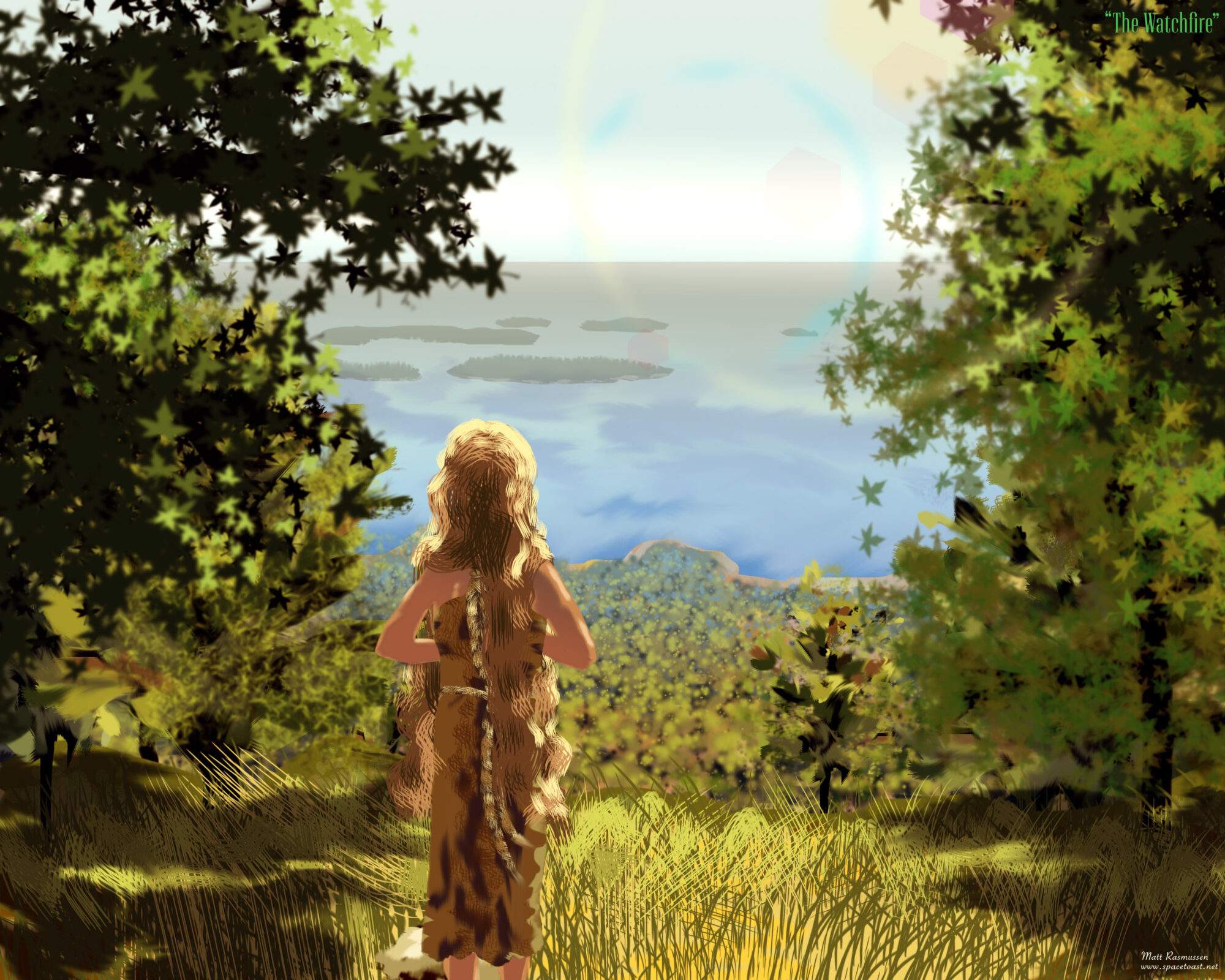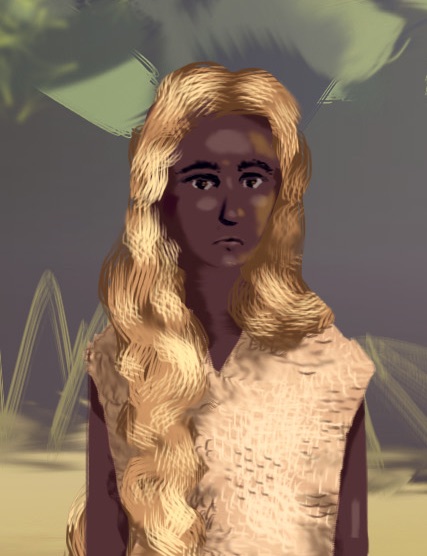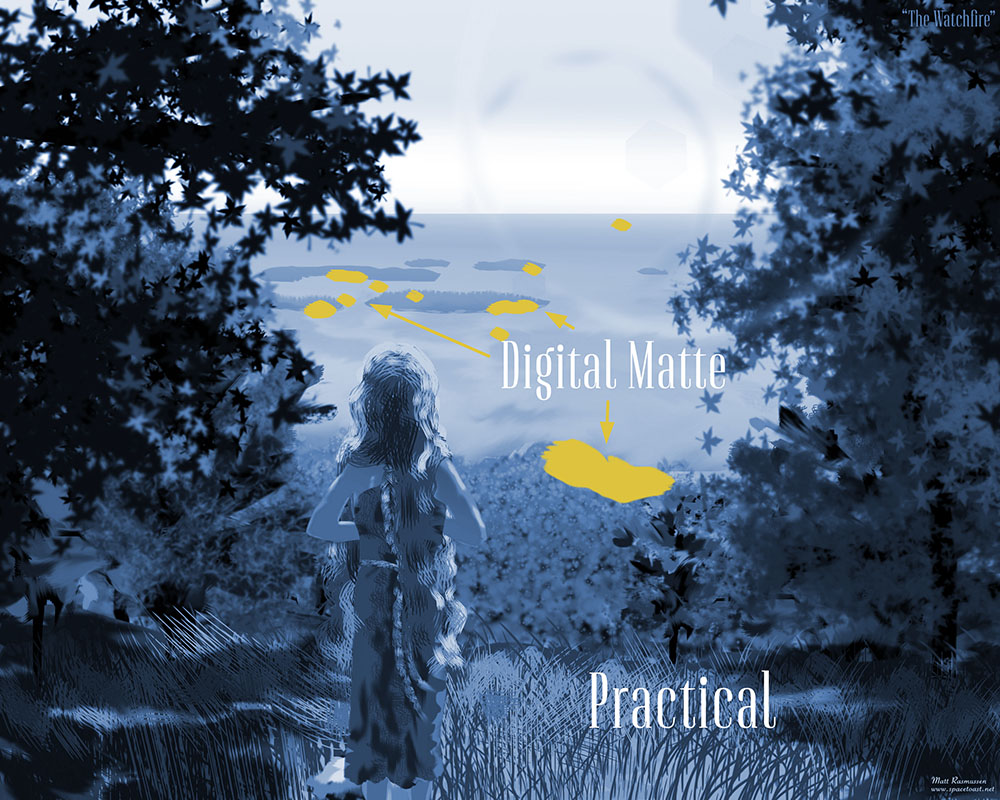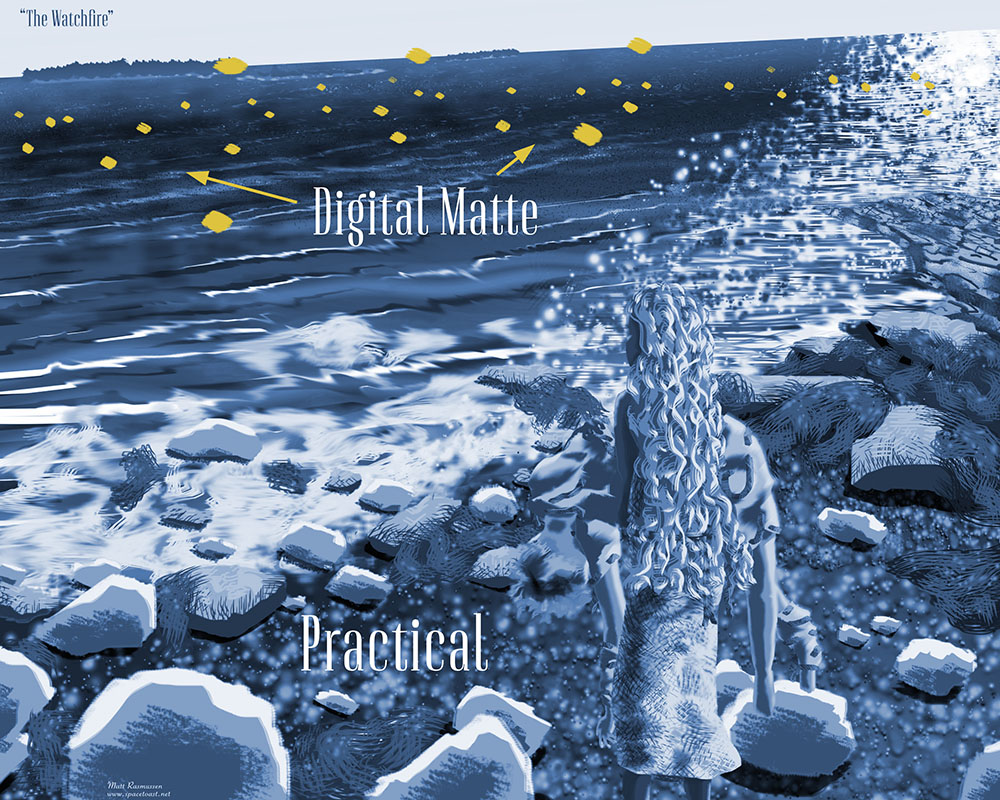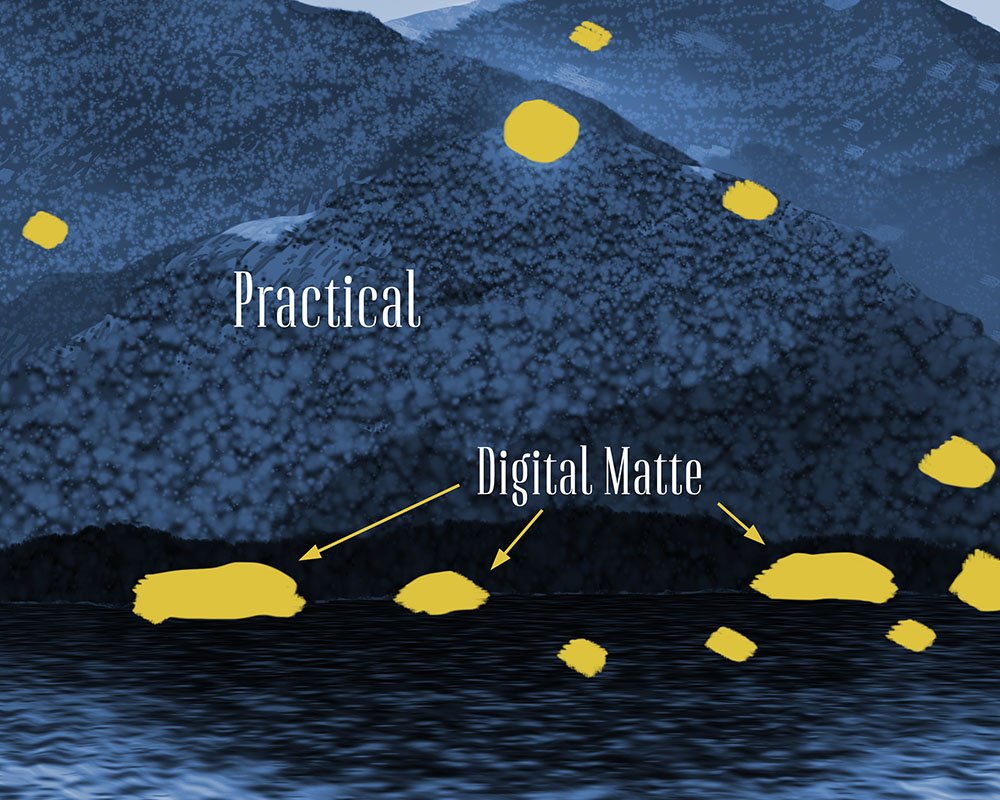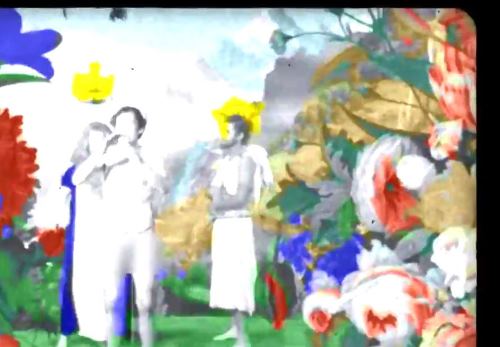“The Watchfire” is a deep time science fiction screenplay that plays as symbolist fantasy/horror, in the mode of Jack Vance’s Dying Earth, or films like Evolution, Innocence, and Sauna. Two 10-year-old girls guard a flaming beacon alone on a hill by the sea. One day a third child appears.
Concept art on the blog here.
At barely six pages, “The Watchfire” can be filmed on a modest budget with a small crew. This is a breakdown of how.
Three young actors are needed. The two “sisters” (the Dawn Girl and the Dusk Girl, age 10-12) will need matching long blonde wigs, and simple handmade-looking dresses matching their hair. One will need to memorize two long-ish blocks of text–to be recited as stories, not performed as lines–the other only one recital. They should be rehearsed together in the weeks prior to filming, with a focus on being comfortable and engaged with one other. The third (the Golden Boy, 10-12) will need a simple handmade “castaway” outfit of canvas and rope. He should be rehearsed separately. The childrens’ parents/guardians will need to sign off on some violence in the film, though very little that’s apparent to the actors on set. I won’t pretend to be an expert on directing children, but per Lenore DeKoven it’s best if the children are minded on set by someone other than a parent; children tend to have trouble focusing with a parent present. (Think home vs. school.) Limitations on shooting hours will have to be researched and planned for.
Filming will take place over a weekend. As I’m currently based in Boston, coastal Maine will be the most accessible shooting location, although northern California (near my sister) or the Swedish coast (near Denmark) would also work. The requirement is a temperate wooded area where the hills meet the sea. Shooting in Maine would allow me to save on accommodations by using the visitors’ apartment at my mother’s house. (Two of the kids even get bunk beds!)
Three filming locations will be needed:
- The Beacon. An overgrown field bordered by trees.
- The Hillside. A wooded clearing overlooking the ocean.
- The Seashore. An uninhabited beach.
The Beacon
The primary shooting location will need to be built in situ beforehand. It consists of a central object (the beacon) resembling a dead tree turned to stone, with eternal flames playing across its branches. Beside it sit two small pools of indeterminate depth. A ring of stones surrounds the beacon. The surrounding tall grass is trampled into a crop circle about 40 feet in diameter, with a second ring of stones marking its outer boundary.
A property owner’s back field would be ideal. The house can be quite close by, as long as it’s out of the shot. (A friendly house is also helpful for costume changes, bathroom breaks, emergency battery charges, craft services, etc.) Sync sound would be needed on this set, so proximity to a busy road is a no-go.
The beacon itself will be only partially built, to a height about a foot taller than the actors. The upper branches and flames will be created digitally in post-production. Practical lights will be hung from booms atop the beacon, to be covered over with CGI. Although the sisters enter and exit the pools in story, this can be largely faked with staging and cutting. Mylar sheets under a few inches of water may work to simulate much deeper pools. (The bottoms are never seen.) Tutorials for creating a crop circle with planks and ropes are easy to find online.
For the effects work, a chrome ball must be filmed with bracketed exposures at each setup on the beacon set, to generate an Image Based Lighting model. Instances where the actors move in front of the CGI tree elements will have to be hand rotoscoped.
The Hillside
A couple of brief scenes take place just outside the beacon’s crop circle. They’ll almost certainly need to be filmed elsewhere. No build. Sync sound won’t be needed. The scenes can probably be shot guerilla style near a public lookout.
The effects work here is largely subtractive: Removing any trace of civilization from the background. Towns, ships, square fields, vapor trails, roads, etc. will need to be painted out in a tracked travel matte. Elements the actors pass in front of will have to be rotoscoped out.
The Seashore
A single, relatively brief scene. No build. No sync sound.
The trick here is that Maine’s inshore waters are littered with brightly-colored lobster buoys. The best option may be to film near high tide in a cove with extensive mudflats. (Traps are set below the intertidal zone; the farther out the low tide line, the smaller and more distant the buoys, making them easier to paint out.)
Pickup Shots
Establishing shots will present the same civilization problems. These will tend to be fairly static, and can be constructed as matte collages.
Post Production
Special effects will be done by me in Fusion, which was our primary tool on “The Garden, 1910.” Unless I can secure some kind of residency, they’re likely to take a couple months to complete on evenings and weekend.
In All…
The project can be accomplished in about 3-4 months, start to finish.
Required personnel:
- Director (me)
- Producer
- DP
- Dawn Girl actor
- Dusk Girl actor
- Golden Boy actor
- At least one guardian/parent for the above
- Hair/Makeup
- Sound
